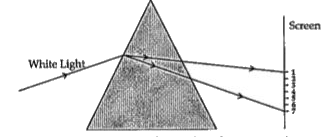A natural phenomenon that supports the experimental conclusion that atoms are divis ible is
allotropy
radioactivity
cracking
none of these
The correct Answer is:B
Step-by-Step Solution:
1. Identify the Question: The question asks for a natural phenomenon that supports the conclusion that atoms are divisible.
2. Understanding Atomic Structure: Atoms were once thought to be indivisible. However, scientific discoveries have shown that they can be broken down into smaller particles.
3. Recognizing Radioactivity: One of the key natural phenomena that demonstrate the divisibility of atoms is radioactivity.
4. Explaining Radioactivity: Radioactivity involves the emission of energy particles from unstable atomic nuclei. This process occurs when an unstable nucleus transforms into a more stable one.
5. Types of Emitted Particles: During radioactivity, different types of particles can be emitted, including alpha particles, beta particles, and gamma rays.
6. Formation of New Elements: As a result of this emission, the unstable nucleus can change into a different element, indicating that the original atom has been altered, thus supporting the idea that atoms are divisible.
7. Example of Radioactivity: For instance, consider an isotope of oxygen (with atomic number 8). When it undergoes radioactive decay, it may emit beta particles and transform into nitrogen, which is a stable element. This transformation illustrates the concept of atomic divisibility.
8. Conclusion: Therefore, the natural phenomenon that supports the conclusion that atoms are divisible is radioactivity.
Final Answer: Radioactivity.
---
Topper's Solved these Questions
Similar Questions
Knowledge Check
Studies on the phenomenon of radioactivity supported the conclusion that the
(i) atom was divisible
(ii) atom could spilt into netural particles
(iii) atom could split into charged particles
(iv) atom was indivisibleA(i),(iii)B(ii),(iii)C(i)D(iv)Which phenomenon best supports the theory that matter has a wave nature?
Aelectron momentumBelectron diffractionCphoton momentumDphoton diffractionIn which one of the following pairs of experimental observations and phenomemnon does the experimental observation correctly account for phenomenon does the experimental observation correctly account for phenomenon
AExperimental observationPhenomenonX-ray spectraCharge on the nucleusBExperimental observationPhenomenonα-particle scatteringQuantized electron orbitCExperimental observationPhenomenonEmission spectraThe quantization of energyDExperimental observationPhenomenonThe photoelectric effectThe nuclear atom
Name a natural phenomenon which is caused by the dispersion of sunlight in the sky.
View SolutionWhat is the experimental evidence in support of the diea that electronic energies in an atom are quantized?
View Solution
In nature, this phenomenon is observed in
View SolutionWhich natural phenomenon is caused by electric charges?
View SolutionScience may be defined as an ordered knowledge of natural phenomenon and the rational study of the relations between the concepts in which those phenomenon are expressed.
View Solution
